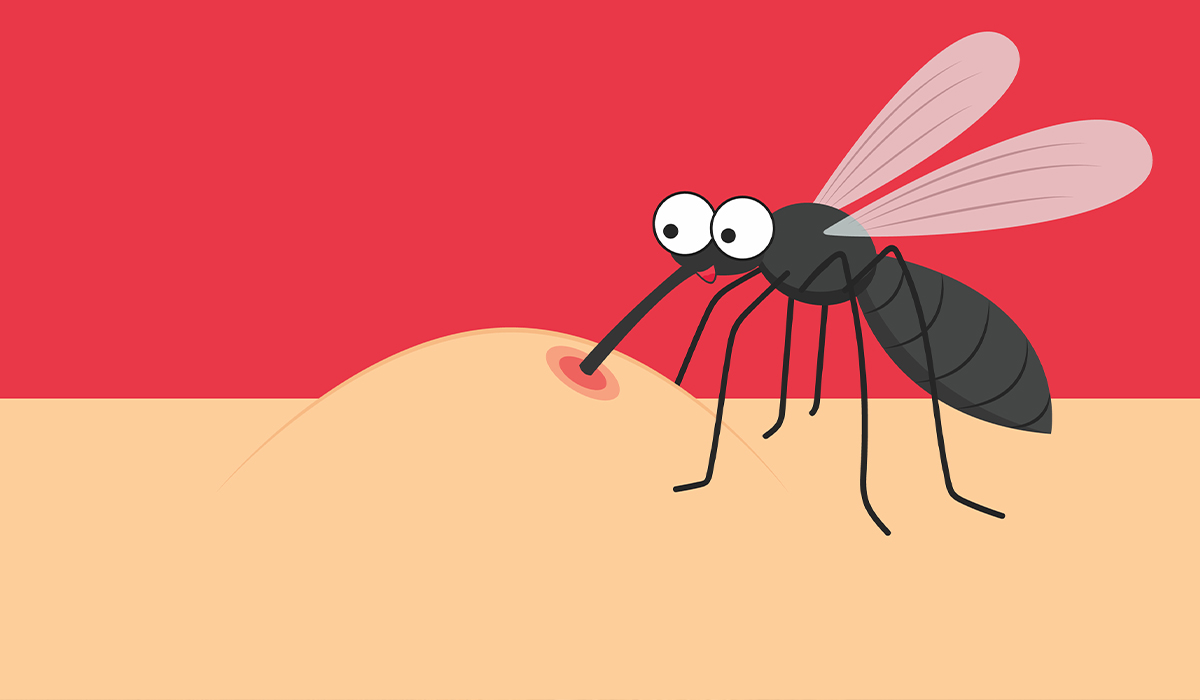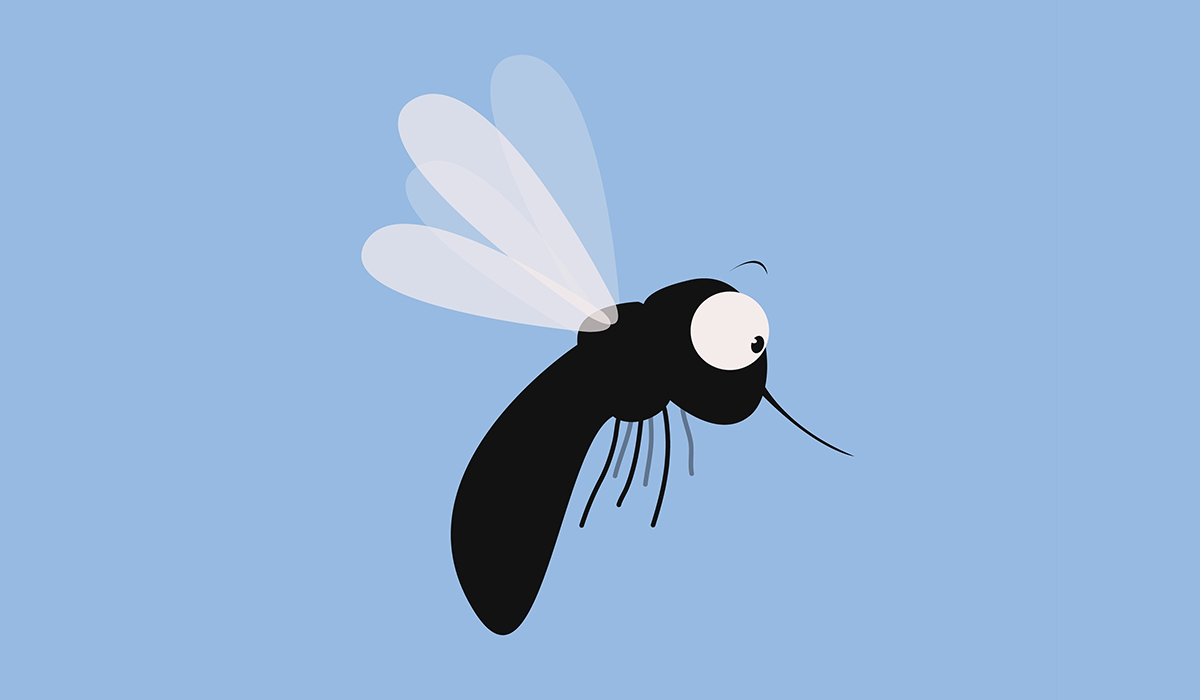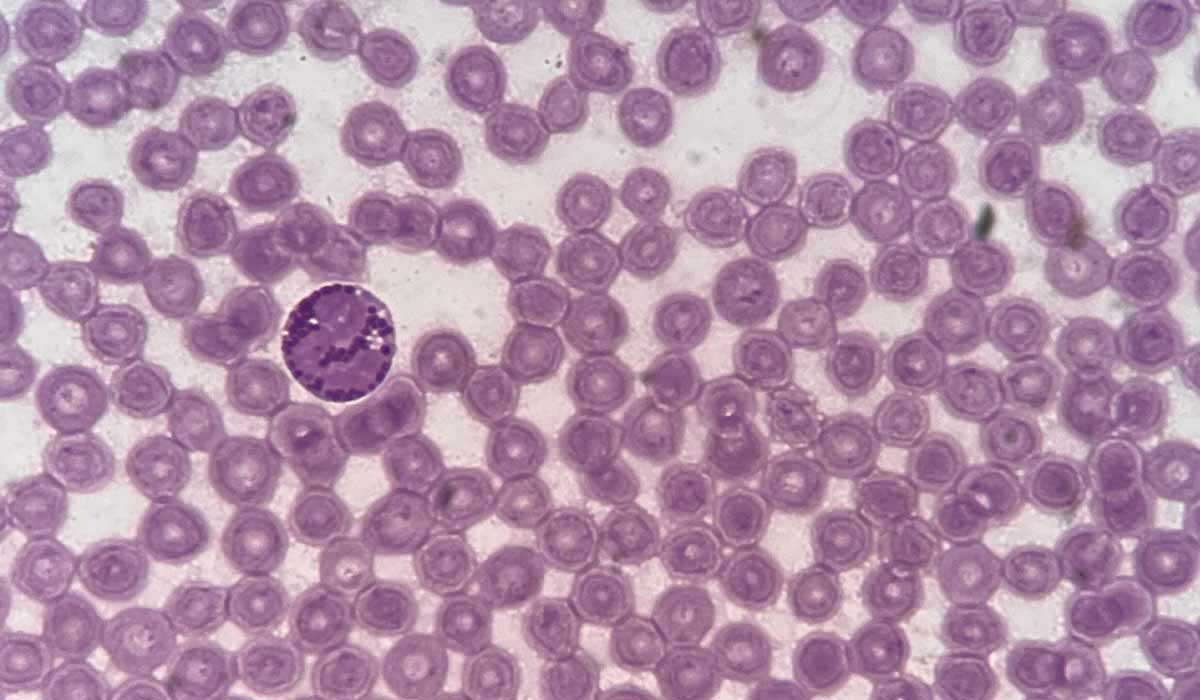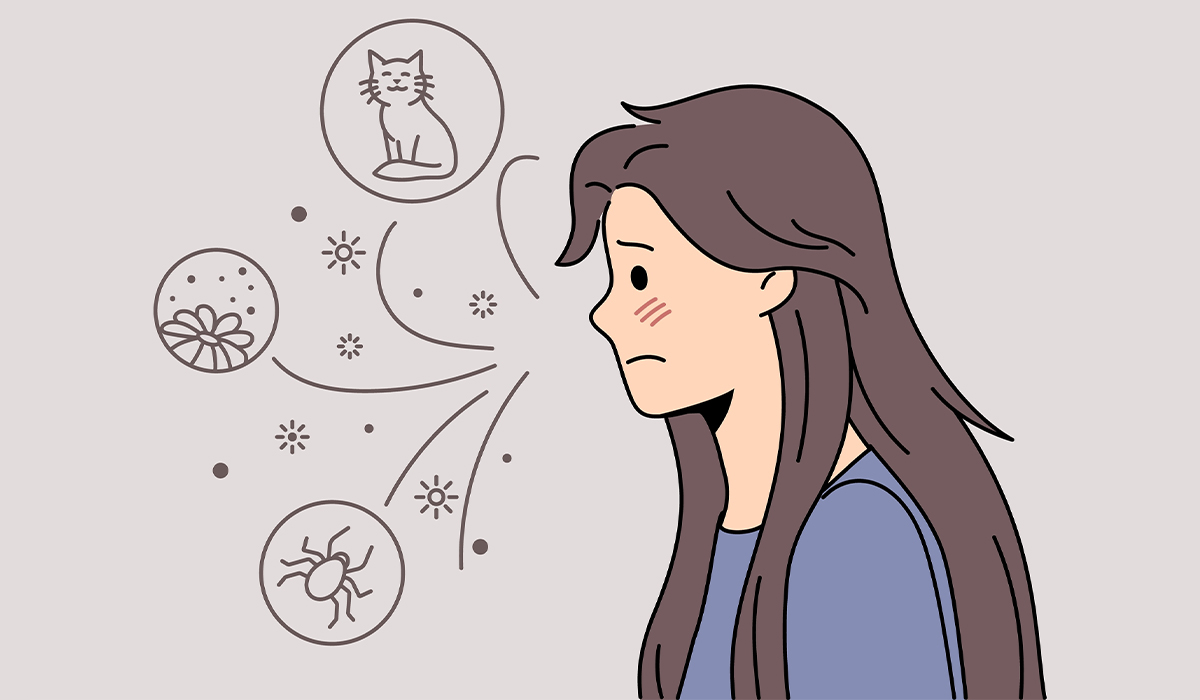Bed Bugs is the name for parasites with specialized elongated mouth apparatuses. There are dozens of species of bed bugs in the family Cimicidae, and only a few pose a relative danger to humans. Some species of bed bugs bite humans because human blood is their food. The bed bug problem can affect anyone, regardless of socioeconomic level. Being bitten by a bed bug results in a group of symptoms.

Establishing a diagnosis is essential to distinguish bed bug bites from other diseases, such as allergies. This is the first step to taking action to combat the parasites. There are various methods of treating the symptoms that bed bug bites cause. With the help of multiple options, you can eliminate bed bugs from your home environment. Learn what procedures to implement to avoid bed bug problems.
Bed bugs have been a problem for years in many parts of the world, including the United States. Their species are found in tropical and temperate climates. Among the most common bed bugs that pose a threat are Cimex lectularius![]() and Cimex hemipterus
and Cimex hemipterus![]() . Skin reactions can occur after a bed bug bite. Bed bugs are also suspected of carrying infectious agents. They are blood-sucking insects that feed on humans and pets. Bed bug infestations and outbreaks are most common in large cities with concentrations of people.
. Skin reactions can occur after a bed bug bite. Bed bugs are also suspected of carrying infectious agents. They are blood-sucking insects that feed on humans and pets. Bed bug infestations and outbreaks are most common in large cities with concentrations of people.
Bed bugs can spread to far distances in an attempt to reach new hosts. These insects typically use ventilation systems to spread. Medical interest in bed bugs has increased in recent years due to more frequent reports of outbreaks in Western countries. Bed bugs are a common pest that ascends in homes and hotels, offices, retail and entertainment environments, health sectors, and transportation. In summary, bed bugs are found where people sit or sleep.

Bed bugs such as Cimex lectularius and Cimex hemipterus, which feed on humans and animals, are specific small insects that their appearance can identify. Bed bugs are arthropods![]() smaller than a grain of corn; in size, they can match more like an apple seed. They are brown and flat hematophagous ectoparasites with a round body, short foreheads, and legs. Males have a pointed abdomen, while females have round abdomen. The bugs have elongated mouth apparatuses that allow them to bite and take food. Despite having tiny wings, the insects cannot fly.
smaller than a grain of corn; in size, they can match more like an apple seed. They are brown and flat hematophagous ectoparasites with a round body, short foreheads, and legs. Males have a pointed abdomen, while females have round abdomen. The bugs have elongated mouth apparatuses that allow them to bite and take food. Despite having tiny wings, the insects cannot fly.
Non-hazardous to humans, bed bug species feed on plant sap. Cimex lectularius is a common bed bug found in temperate climates, while Cimex hemipterus can be found in tropical climates. Both species have a similar appearance; the common bed bug only has a broader body than the tropical bed bug, so it isn't easy to distinguish between them. Bed bugs, when they develop, go through five stages before reaching full maturity. In the first stage of development, bed bugs are tiny in size, reaching 1mm in length.
The younger stages of bed bugs also have brighter, more delicate colors. Bed bugs stay in groups. Their presence can also be confirmed by noticing fecal spots. In addition, bed bugs emit a specific odor, which they owe to pheromones![]() . Alarm pheromones are secreted when their safety is disturbed. The type of smell is described as sweet. People most often notice the presence of bed bugs in furniture, especially beds and mattresses.
. Alarm pheromones are secreted when their safety is disturbed. The type of smell is described as sweet. People most often notice the presence of bed bugs in furniture, especially beds and mattresses.
The insects can settle in the protrusions of the mattress. In such places, observe different stages of bed bugs along with dark fecal stains. Bed bugs hatch quickly, and their numbers can increase significantly within 9 to 12 days. In addition, high temperatures provide a better hatching environment for bed bugs; the insects develop more slowly in more excellent conditions. Bed bugs are also photophobic![]() , which means they like a darkened environment. Traveling and changing sleeping locations can increase the risk of bed bug bites and their spread.
, which means they like a darkened environment. Traveling and changing sleeping locations can increase the risk of bed bug bites and their spread.

Bed bugs seek food, which can be an animal but is most often a human. The parasites recognize the carbon dioxide exhaled by their hosts, their body heat, and the chemicals secreted by their skin. This is how they find potential hosts, which usually happens at night due to the insects' photophobic nature. Bed bugs do not fly, jump, or live on the human body; their only contact with humans is when they bite for blood. Bed bugs, therefore, climb onto the body of a sleeping person, bite, and then return to shelter.
Bed bugs have mouth apparatuses that pierce the skin and suck blood. The insects also have thin spears that inject saliva![]() into the host. The saliva injected into the skin causes various reactions, including anticoagulation. A bug bite is painless because the insect's saliva contains anesthetic compounds. The bite, therefore, becomes apparent after a few hours. Some reactions to bites may be asymptomatic, but various skin lesions are usually visible. Patients may experience a variety of symptoms upon waking, which include:
into the host. The saliva injected into the skin causes various reactions, including anticoagulation. A bug bite is painless because the insect's saliva contains anesthetic compounds. The bite, therefore, becomes apparent after a few hours. Some reactions to bites may be asymptomatic, but various skin lesions are usually visible. Patients may experience a variety of symptoms upon waking, which include:

Bug bites often cause skin reactions caused by an immune response to insect saliva proteins. The severity of symptoms following a bite varies from person to person. The typical symptom associated with a bed bug bite is a small erythematous patch![]() with a hemorrhagic crust. The color of the skin lesions can also vary, from pinkish hues to purplish. The skin lesions can also be vesicular, papular, nodular, eczematous, or edematous.
with a hemorrhagic crust. The color of the skin lesions can also vary, from pinkish hues to purplish. The skin lesions can also be vesicular, papular, nodular, eczematous, or edematous.
The skin lesions may be accompanied by pruritus![]() , and persistent scratching can lead to a secondary infection. The number of lesions can also vary from case to case, but a characteristic of bed bugs is a series of bites in a line. In some cases, however, there are so many lesions on the skin that the symptom resembles urticaria. If the bed bug habitat is not eliminated and the lesions are not treated, skin reactions can become chronic, causing dermatitis.
, and persistent scratching can lead to a secondary infection. The number of lesions can also vary from case to case, but a characteristic of bed bugs is a series of bites in a line. In some cases, however, there are so many lesions on the skin that the symptom resembles urticaria. If the bed bug habitat is not eliminated and the lesions are not treated, skin reactions can become chronic, causing dermatitis.
Sometimes, a bed bug bite can cause additional reactions, such as asthmatic reactions![]() , urticaria
, urticaria![]() , or anaphylaxis
, or anaphylaxis![]() . An asthmatic condition is an aggravation of bronchial asthma that can be dangerous. The classic asthmatic reaction appears abruptly as shortness of breath of varying intensity. Skin lesions after a bed bug bite can resemble or cause urticaria. Urticaria is also an allergic reaction that involves the appearance of lesions and redness on the skin.
. An asthmatic condition is an aggravation of bronchial asthma that can be dangerous. The classic asthmatic reaction appears abruptly as shortness of breath of varying intensity. Skin lesions after a bed bug bite can resemble or cause urticaria. Urticaria is also an allergic reaction that involves the appearance of lesions and redness on the skin.
Anaphylaxis, on the other hand, is a rapid onset dangerous hypersensitivity reaction of the body in response to an agent, including bed bug bites. Anaphylactic shock usually results in a significant drop in blood pressure. Both asthmatic and anaphylactic reactions can be life and health-threatening.
Hyperpigmentation is a symptom that appears after the skin lesion of a bug bite has subsided. It usually takes several days for post-inflammatory hyperpigmentation to appear, as it occurs when the skin at the site of the bite becomes discolored. The body overproduces melanin, which causes post-bite discoloration. Skin lesions of bed bug bites usually do not cause scarring, but some people may be more prone to discoloration due to various factors.

The problem of bed bugs is complicated and can often be related to mental health. Mental disorders are unrelated to the body's physiological reactions to the bite. The onset of cognitive problems has to do with the presence of parasites in the home or other environments, which causes anxiety![]() and generally adversely affects the quality of life. Excessive vigilance leads to insomnia and stress, resulting in serious psychological consequences.
and generally adversely affects the quality of life. Excessive vigilance leads to insomnia and stress, resulting in serious psychological consequences.
People who do not have the financial resources needed to get rid of bed bugs from an infestation effectively are particularly vulnerable to mental health problems. Permanently getting rid of bed bugs is a complex, lengthy, and costly process, which significantly impacts stress. People who have experienced bed bug problems experience fears and phobias about the recurrence of the parasites.
In very rare cases, skin lesions occurring after bed bug bites are accompanied by systemic symptoms, including fever![]() and malaise
and malaise![]() . Fever and other flu-like symptoms can be associated with an overreaction of the body to the harmful agent. However, these are not characteristic or common symptoms; diagnosis is based mainly on identifying skin lesions and discovering the bed bug habitat.
. Fever and other flu-like symptoms can be associated with an overreaction of the body to the harmful agent. However, these are not characteristic or common symptoms; diagnosis is based mainly on identifying skin lesions and discovering the bed bug habitat.
In addition to the symptoms that bed bug bites cause, the problem associated with this insect may also be related to infectious diseases![]() . Some researchers suspect bed bugs, such as ticks or mosquitoes, may transmit infectious agents. However, more research needs to be done to confirm this hypothesis. Considering bed bugs as a source of disease transmission, it is suspected that the parasites may be linked to the following diseases:
. Some researchers suspect bed bugs, such as ticks or mosquitoes, may transmit infectious agents. However, more research needs to be done to confirm this hypothesis. Considering bed bugs as a source of disease transmission, it is suspected that the parasites may be linked to the following diseases:

The disease is caused by the microorganism Coxiella burnetti, whose natural reservoirs are ticks and rodents, but it is also suspected that bed bugs can transmit the disease. This is due to the sighting of the microorganism in all stages of insect development. C.bruneti persisted in the bodies of bed bugs for a long time and was excreted in feces. However, the ability of bed bugs to transmit this microorganism to humans requires further study.
A powerful link has also been noted between bed bugs and hepatitis B virus (HBV). Studies have often detected this type of virus in bed bugs, where transstadial transmission has been demonstrated. However, no studies have confirmed that bed bugs impact the incidence of HBV infection in humans, so there is no evidence for the hypothesis.
People who have dealt with bed bugs may become seriously concerned about their danger. Some researchers are looking for a link between HIV and the presence of bed bugs. However, it is essential to note that no studies have ever found HIV in the bodies or feces of bed bugs.
Correctly diagnosing a bed bug problem can be difficult due to the frequent confusion of skin lesions with dermatological diseases. A thorough history is therefore essential, considering that the patient in question may have been exposed to bed bugs at home or elsewhere. Sometimes, a blood count is used to confirm when the cause of the lesions present is other than bed bugs. In complicated situations, a skin biopsy![]() may also be performed.
may also be performed.
Regarding bite treatment regimens, there are no specific treatment options. In some cases, topical steroids are used. However, systemic antihistamines, which are used for various allergic reactions, are used to reduce the intensity of itching. For secondary bacterial infections, antibiotics are used. Treatment then depends on the patient's situation and the intensity of the symptoms. Eventually, the symptoms resolve independently in one to two weeks after the bed bugs are eliminated. So, getting rid of bed bugs from the environment is required to achieve a complete cure.

Bed bugs are complicated to control due to their resistance to insecticides and hiding ability. However, various practices can work in the fight against bed bugs. The first step is thoroughly inspecting the site and neighboring areas to locate all bed bug habitats. Next, there are chemical and non-chemical options for controlling the insects.
Chemical ways of dealing with bed bugs include insecticides. This is one of the main ways to solve the bed bug problem, but it is essential to remember that some species of these insects resist using chemicals.
The failure of chemical treatments leads to using non-chemical options as an alternative. One such way is to completely clean the environment of bed bug habitats, which may mean removing mattresses, furniture, and other items on which the insects have settled. Thorough vacuuming and removing bed bugs with an aspirator helps eliminate the parasites.
Washing fabric items such as bedding and curtains is also essential. An environmentally friendly method that effectively eliminates bed bugs is thermal shock![]() , which can be done using high or low temperatures. In addition, there are many more options to try when a bed bug problem persists.
, which can be done using high or low temperatures. In addition, there are many more options to try when a bed bug problem persists.
Bed Bugs is the name for parasites with specialized elongated mouth apparatuses. These tiny insects have been a problem for years in many parts of the world, including the United States. Their species are found in tropical and temperate climates. They can be found in the home, often inhabiting beds and mattresses. Being bitten by a bed bug results in a group of symptoms.
Bed bug bites cause problems with this insect and may also be related to infectious diseases. Correctly diagnosing a bed bug problem can be difficult due to the frequent confusion of skin lesions with dermatological diseases. Treating the bites is not tricky, but eliminating the symptoms requires eliminating the bed bug habitat, which can be long and challenging.
Table of Contents

There are not many spider species harmful to a human. Only a handful have fangs long enough to penetrate human… read more »

Mosquito bites are a skin reaction to the bite of a female mosquito. Why is this happening? How to prevent… read more »

Gnats are tiny flying insects in the Diptera group, which includes flies and mosquitoes. They have fragile appearances, small bodies,… read more »

Do you know what the symptoms of Lyme disease are? The sooner you get diagnosed the better. Learn all about… read more »

Anaplasmosis is a systemic infectious disease transmitted by ticks. It can be as dangerous as Lyme disease. Read the article… read more »

The term typhus encompasses three main types of typhus – epidemic typhus, endemic typhus, and scrub typhus. Each one of… read more »

Malaria is a dangerous tropical infection that spreads through mosquitoes. Infected people usually experience symptoms like the flu, such as… read more »

Anaphylaxis is a strong reaction that happens when your body faces allergens it strongly dislikes, like peanuts or insect bites.… read more »

Allergies happen when the immune system starts a reaction against certain substances, such as pollens, pet fur, food, or medication.… read more »